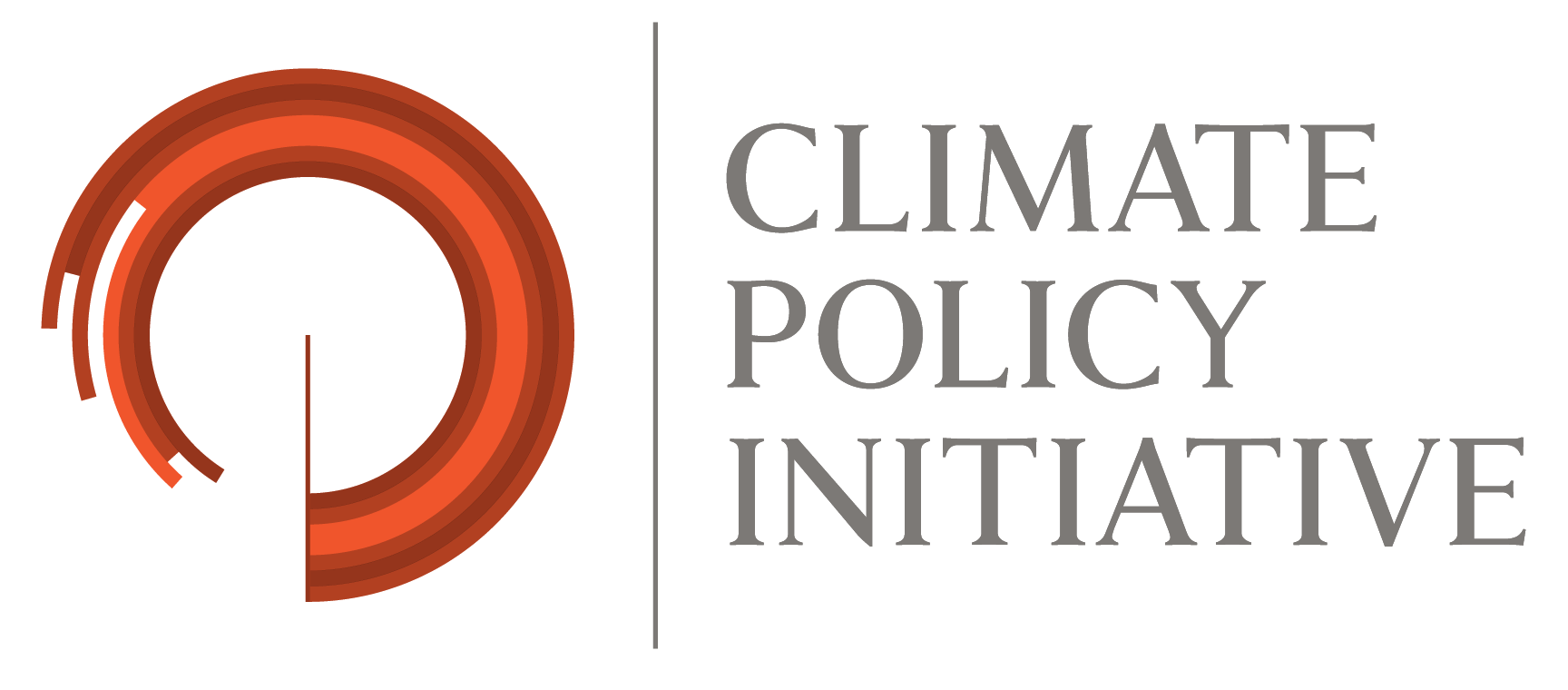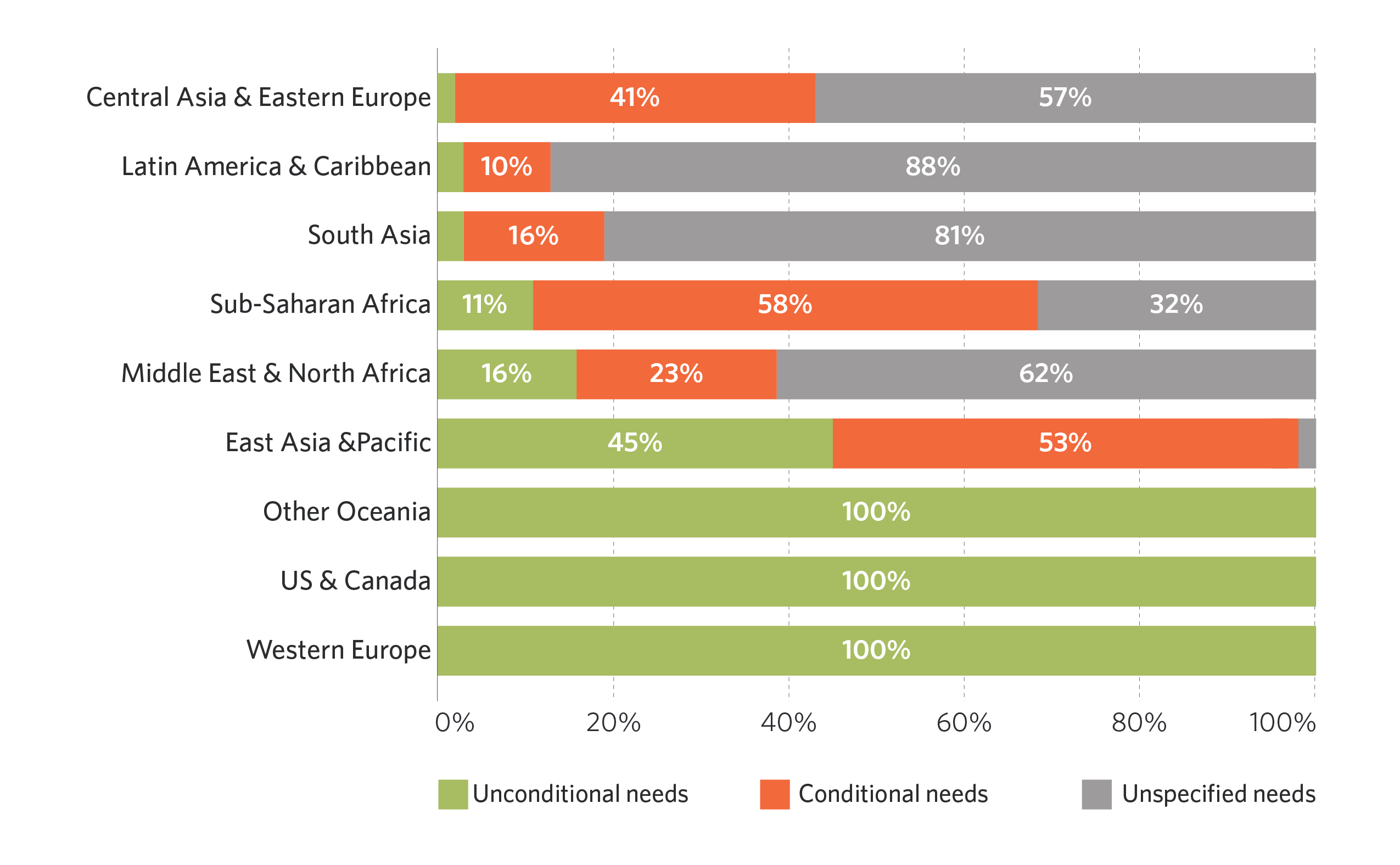Since 2021, CPI has worked to support a collective understanding of the climate finance needed to reach net zero carbon emissions by 2050. Accurately assessing the size of the global climate finance gap can enable decision-makers to mobilize finance effectively, quickly, and to where it is most needed. While top-down modelling gives a comprehensive view of global finance needs to align to a 1.5oC pathway, needs estimates can also be developed at the country level, based on national priorities.
Referred to as bottom-up needs, this country-level approach is critical for understanding nations’ climate finance ambitions and required level of international support to reach their mitigation and adaptation objectives. Bottom-up needs outline domestic (unconditional) and international (conditional) capital required to achieve national climate goals, as stated in official documents such as Nationally Determined Contributions (NDCs).
CPI’s bottom-up climate finance needs are derived from the collection and standardization of climate finance needs data from 167 NDCs and provide a comprehensive overview of climate finance needs as presented by countries. Alongside our assessment of top-down needs and our wider tracking and analysis of climate finance flows, this analysis can help identify the largest climate finance gaps at the country level, track progress against climate targets, and better inform decision-makers and financial institutions on how to increase the speed, scale, and quality of climate finance.
This work can also more accurately inform discussions about international climate finance targets, such as the Baku to Belém Roadmap, and future NDC updates to improve and align the scoping of needs with the ambition of international support.
HOW MUCH DO COUNTRIES NEED TO ACHIEVE THEIR NDC GOALS?
Of the 194 UNFCCC parties that have ratified the Paris Agreement and subsequently submitted NDCs, 114 include explicit estimates of finance needed to reach their NDC goals in their most recent submission.
Our updated compilation of bottom-up needs shows that for these 114 parties, an estimated average of USD 473 billion is required per year through 2035 to meet their climate goals. Of the total estimated needs, 70% (USD 331 billion per year) will be required for mitigation and 21% (USD 100 billion per year) for adaptation and resilience. The remaining 9% (USD 42 billion per year) will be needed for cross-cutting initiatives that target both mitigation and adaptation objectives. Discussed further below, it should be noted that bottom-up needs are dwarfed by those estimated using global, 1.5°C-aligned models (top-down needs), which CPI estimates at USD 7.5 trillion per year between now and 2030, and over USD 8.8 trillion per year from 2031 to 2050.
Average yearly bottom-up climate finance needs until 2035 by climate objective
WHERE SHOULD FINANCE BE DIRECTED?
Bottom-up needs are largely concentrated in emerging markets and developing economies (EMDEs), reflecting both the higher climate vulnerability of these regions, as well as the nature of the Paris Agreement, which encourages non-Annex I countries to indicate the level of international support they require to meet their NDC targets. More than 80% of recorded bottom-up needs (USD 388 billion per year) are concentrated in EMDEs.
Notably, sub-Saharan Africa has the largest reported bottom-up needs, accounting for 27% (USD 128 billion per year) of total annual needs until 2035, followed closely by South Asia (26%, USD 126 billion per year). These regions are some of the most vulnerable to climate change, despite their minimal contributions to historical global GHG emissions.
Average yearly bottom-up needs 2024-2035 by region
However, it should be noted that regional comparison of bottom-up needs is partly limited by data availability, as not all countries cost their finance needs in their NDCs. To explore the data on bottom-up needs for each region, visit our bottom-up needs interactive dashboard.
Bottom-up needs by region
WHAT LEVEL OF INTERNATIONAL SUPPORT WILL BE NEEDED IN EMDEs?
Many EMDEs will require significant international support to meet their stated climate objectives, known as conditional climate finance needs. For EMDEs, 36% of stated climate finance needs are conditional on international support, and just 12% are unconditional, or expected to come from domestic public sources. For the remaining 52% of needs for EMDEs, the NDCs did not specify if the finance would be provided domestically or obtained externally. However, given the scale of climate finance needs compared to limited domestic resources in many countries, it is highly likely that significant international support will be required.
As shown in the figure below, more than half of stated needs are contingent on international support in many regions, including sub-Saharan Africa, the Middle East, and North Africa, East Asia and the Pacific, and Central Asia and Eastern Europe.
Unconditional and conditional needs by 2035 by region
Despite the limitations of current NDCs, the bottom-up needs estimates provide insights both on the level of countries’ climate ambition and on their stated capacity for achieving these objectives. With many regions, particularly those with numerous EMDEs, requiring international support for more than half of their stated needs, bottom-up needs estimates illustrate that continued, significant international support is needed to help countries meet their climate targets and avoid the worst impacts of climate change.
Additionally, bottom-up needs estimates reveal that current country-level ambition is insufficient to keep global temperature rises within 1.5°C. While some countries estimate their national climate finance needs using predictive models aligned to a 1.5°C pathway, in most cases, needs stated in NDCs are derived from a list of costed mitigation and adaptation measures or projects countries aim to implement. Therefore, the scale and granularity of costed climate finance needs varies widely across NDCs.
Data limitations and variations in methodologies used to derive bottom-up estimates within NDCs result in data gaps, lack of granularity, and inconsistencies across country-level estimates. This results in the severe underestimation of needs at the country level. Therefore, significant effort is needed improve, align, and standardize methodologies for establishing climate targets and estimating the costs of their implementation within NDCs, alongside enhanced support for countries to more accurately and comprehensively estimate their climate finance needs. Strong NDCs can play a role in sending investment signals to investors and develop into actional roadmaps for climate finance. CPI conducted an analysis examining the strength of investment signals in the first 18 NDCs submitted by non-Annex I parties to the UNFCCC by mid-2025, and found that opportunities exist for strengthened investment signals in forthcoming NDCs.




